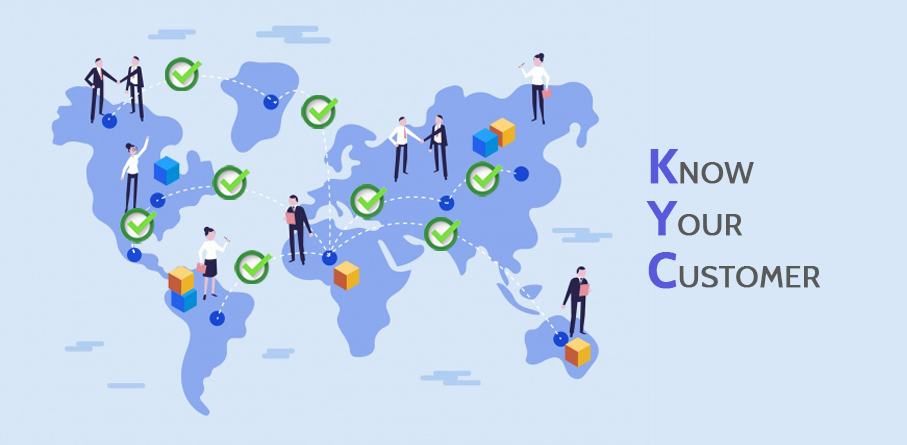Know-Your-Customer (KYC) defines the controls and procedures of Obliged Entities to ensure both the identification of their customers and the nature of their funds, in order to avoid business relationships with individuals or entities that may be committing money laundering or terrorist financing crimes. These procedures, which come into effect as soon as a new customer is acquired, must remain in force (e.g. updating documents) for the entire duration of the business relationship.
What has this verification process meant for Mexico in terms of preventing money laundering? Does this legal requirement imply any benefits for those obliged to comply with it?
Regulatory framework in Mexico
On 17 July 2013, Mexico’s Federal Law for the Prevention and Identification of Transactions with Resources of Illicit Origin(LFPIORPI) , referred to as the ‘Anti-Money Laundering Law’, came into effect, in accordance with the commitments undertaken by the country as a member of the Financial Action Task Force (FATF) against money laundering, an international association that promotes policies to combat threats to the international financial system.
The aim of the ‘Anti-Money Laundering Law’ is for an increase in the coordination between the enforcement institutions, i.e.
• The Attorney General of Mexico (PGR)
• The Office for the Treasury and Public Credit (SHCP)
• The National Banking and Securities Commission (CNBV)
• The Financial Intelligence Unit (UIF), under the authority of The Office for the Treasury and Public Credit (SHCP)
• The Federal Police
On 16 and 23 August 2013, the Regulations and the General Rules, respectively, in reference to the legislation, were published, in order to establish the basis of compliance for the initiative. They came into effect on 1 September 2013.
Before the enactment of the new ‘Anti-Money Laundering Law’, approximately 6,700 entities were obliged to report to the Financial Intelligence Unit (UIF): banks, SOFOMs (Multiple Purpose Financial Companies), SOFOLs (Limited Purpose Financial Companies), SOFIPOs (Popular Financial Companies), financial institutions, credit unions, exchange offices, currency exchange centres and other financial entities.
After its enactment, the legislator listed 15 non-financial activities as ‘Vulnerable activities’ and established that they should be also reported to the UIF when their transaction amounts were in accordance with the amounts indicated in the “Anti-Money Laundering Law’. With the inclusion of these activities, the number of entities obliged to report to the UIF increased to over 300,000.
On 10 March 2018, the Chamber of Deputies approved the Financial Technology Institutions Law, known as the ‘Fintech Law’. This led to changes in the ‘Anti-Money Laundering Law’ as it includes the exchange of virtual assets in the ‘Vulnerable Activities’ register for entities other than financial institutions, if the transactions involve the purchasing or selling of these assets on digital or electronic platforms.
A virtual asset is defined as any representation of value registered and transferred by electronic means, and used as a form of payment for legal transactions. Legal tender and currencies are therefore excluded.
Obligations and strategic benefits
The ‘Anti-Money Laundering Law’ is based on the Know-Your-Customer (KYC) principle, and the aim is for those involved to have the most and best information possible about their customers, in order to curb crime.This law establishes two fundamental obligations:
• Appropriate identification of customers.
• Report to The Office for the Treasury and Public Credit (SHCP) according to the provisions established for Vulnerable Activities.
To comply with these obligations, the companies or individuals that conduct Vulnerable Activities must:
1) Designate a representative to the SHCP that will present the corresponding reports for the transactions made.
2) Identify their customers and users (KYC), storing the information for a period of five years and abstaining from any act or transaction classified as a ‘Vulnerable Activity’ when their customers refuse to provide information or documentation to identify them.
3) Present the reports of transactions with the information from the previous month as from the 17th of each month, in accordance with the transaction amount and the type of ‘Vulnerable Activity’.
The ‘Anti-Money Laundering Law’, based on the Know-Your-Customer (KYC) principle, has therefore resulted in major progress for Mexico in the prevention of money laundering. This progress has been recognised by the Financial Action Task Force (FATF), which Mexico joined in 2000 and which supervises, through mutual evaluations, the level of implementation and compliance with international standards (known as ‘the 40 Recommendations’), performing an Evaluation of Effectiveness.
Its most recent report (end of 2017) points out the solid legal and institutional framework in Mexico, as well as the improvement in the identification of final beneficiaries in the financial sector. This latter is due to the modifications in the Provisions in the Area of Prevention of Money Laundering and Financing of Terrorism issued by the SHCP and which are in the process of implementation.
On the other hand, the legal requirement of Know-Your-Customer also offers a strategic benefit to the financial entities and individuals that perform ‘Vulnerable Activities’, as it allows for the customer to be individualised, thereby personalising the service. In turn, it facilitates best risk management and the implementation of Go-to-market strategies.
In conclusion: the best KYC practices have led to a substantial improvement in national security, tax revenue security, a growth in the GDP and reduction in GDP losses, and a reduction in the percentage of informal economy in the country. As with everything, we should not forget the challenge that compliance with the digital standards of KYC or eKYC actually involves, which includes solutions like digital signature and biometry (facial recognition, digital fingerprint, iris scanning, etc.), its implementation relying on the close to 65 million users of smartphones in the country and the more than 71 million that enjoy internet access.


